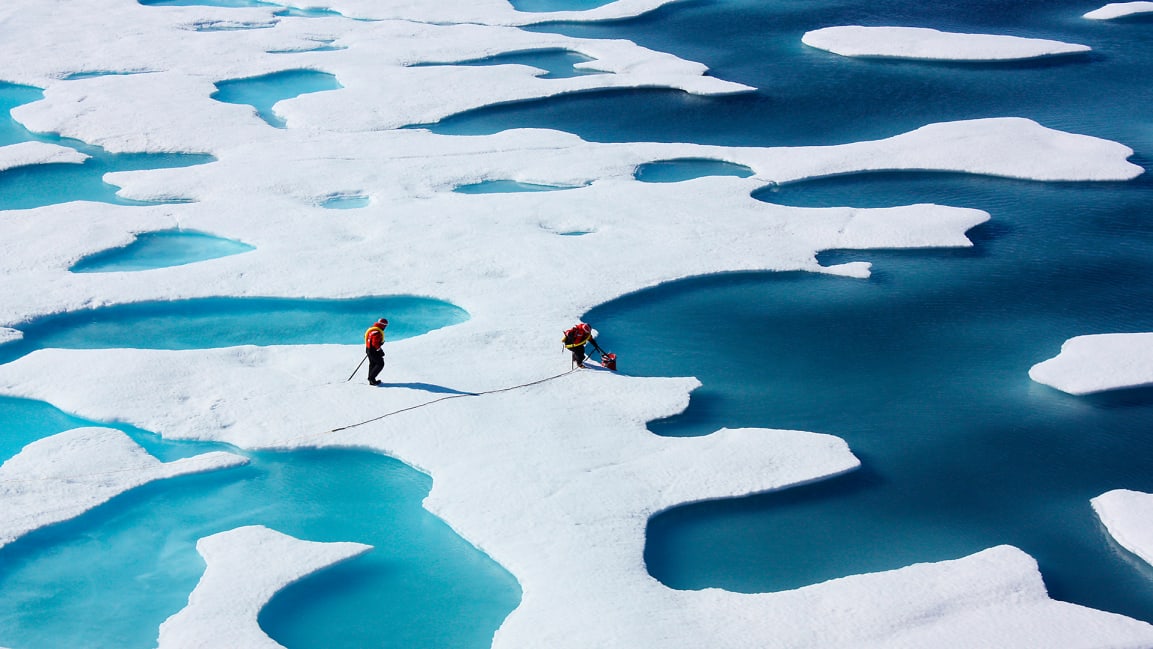
Arctic sea ice melting creates multiple problems
From an Article by Madeleine Cuff, iNews U.K., September 23, 2021
This year 2021 will mark one of the biggest ice melt years for Greenland in recorded history.
Researchers from Denmark estimated that in July of this year enough ice melted on the Greenland Ice Sheet to cover the entire state of Florida with two inches of water. According to NASA, Greenland has melted 5 trillion tons of ice over approximately the past 15 years, enough to increase global sea level by nearly an inch. The observations come on the heels of the recent United Nations report on global warming which stated that accelerating climate change is driving an increase in extreme weather events.
The Arctic is in the grip of a climate crisis that is driving ocean warming and rising sea levels around the world, a new report has concluded. Ice levels dropped to record lows in 2018 and 2019, new data reveals, while parts of the Arctic ocean have seen a near 90 per cent reduction in average sea ice thickness.
Since 1979, ice levels have dropped by almost 13 per cent, according to the annual ‘Copernicus Ocean State Report’ released on Thursday. The region is warming far faster than scientists previously predicted, prompting concerns it could trigger a feedback loop that accelerates further warming.
“Climate change, pollution, and overexploitation have placed unprecedented pressures on the ocean,” warned Dr Karina von Schuckmann of Mercator Ocean international, which chaired the report.
The rapidly melting region is causing disruption to ocean systems around the world, the study published in the Journal of Operational Oceanography warns.
In the North Sea marine heatwaves could be driving changes in the catch of European lobster, red mullet and sea bass, while the Mediterranean Sea has suffered record floods in the past four years and invasive lionfish are arriving in the Indian Ocean.
“Our planet is losing over a trillion tons of ice each year, and even though the polar regions are remote we feel their losses because they disturb the oceans that surround us,” said Andrew Shepherd, Professor of Earth Observation at the University of Leeds.
“Whether it’s rising sea levels driving more frequent coastal flooding, or reduced sea ice cover altering global weather patterns, we are increasingly vulnerable to these changes.”
#######…………………#######…………………#######
See also: Six ways loss of Arctic ice impacts everyone | World Wildlife Federation (WWF), September 2021
1. Temperatures — The Arctic and Antarctic are the world’s refrigerator. Since they are covered in white snow and ice that reflect heat back into space, they balance out other parts of the world that absorb heat. Less ice means less reflected heat, meaning more intense heatwaves worldwide. But it also means more extreme winters: as the polar jet stream—a high-pressure wind that circles the Arctic region—is destabilized by warmer air, it can dip south, bringing bitter cold with it.
2. Coastal communities — Global average sea level has risen by about 7–8 inches since 1900 and it’s getting worse. Rising seas endanger coastal cities and small island nations by exacerbating coastal flooding and storm surge, making dangerous weather events even more so. Glacial melt of the Greenland ice sheet is a major predictor of future sea level rise; if it melts entirely, global sea levels could rise 20 feet.
3. Food — Polar vortexes, increased heat waves, and unpredictability of weather caused by ice loss are already causing significant damage to crops on which global food systems depend. This instability will continue to mean higher prices for you and growing crises for the world’s most vulnerable.
4. Shipping — As ice melts, new shipping routes open up in the Arctic. These routes will be tempting time-savers, but incredibly dangerous. Imagine more shipwrecks or oil spills like the Exxon-Valdez in areas that are inaccessible to rescue or clean-up crews.
5. Wildlife — When there’s less sea ice, animals that depend on it for survival must adapt or perish. Loss of ice and melting permafrost spells trouble for polar bears, walruses, arctic foxes, snowy owls, reindeer, and many other species. As they are affected, so too are the other species that depend on them, in addition to people. Wildlife and people are coming into more frequent contact – and often conflict – as wildlife encroach on Arctic communities, looking for refuge as their sea ice habitat disappears.
6. Permafrost — Arctic ice and permafrost — ground that is permanently frozen— store large amounts of methane, a greenhouse gas that contributes to climate change. When it thaws, that methane is released, increasing the rate of warming. This, in turn, causes more ice and permafrost to thaw or melt, releasing more methane, causing more melting. As we lose more ice more quickly and see more rapid permafrost melt, we will start seeing the worst climate change predictions come true.
